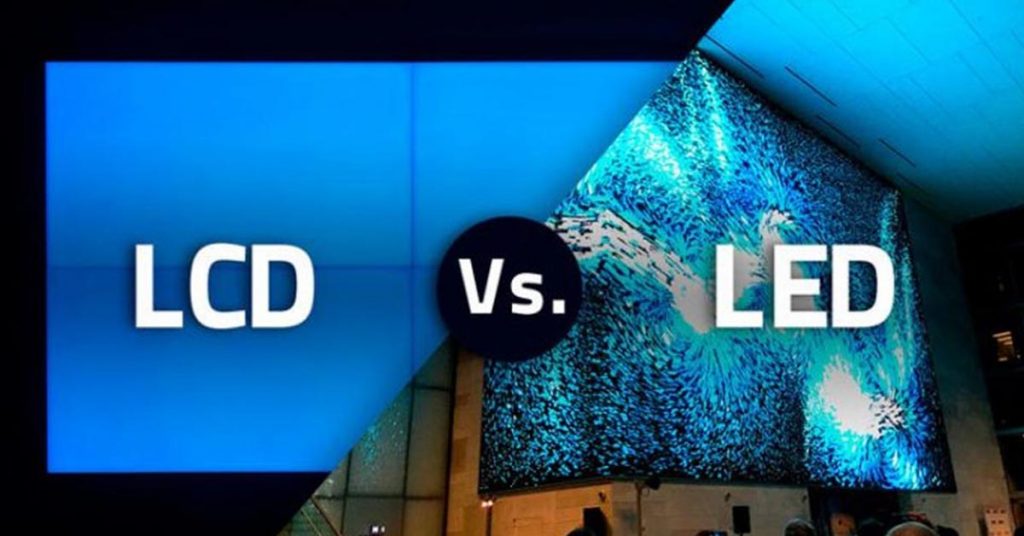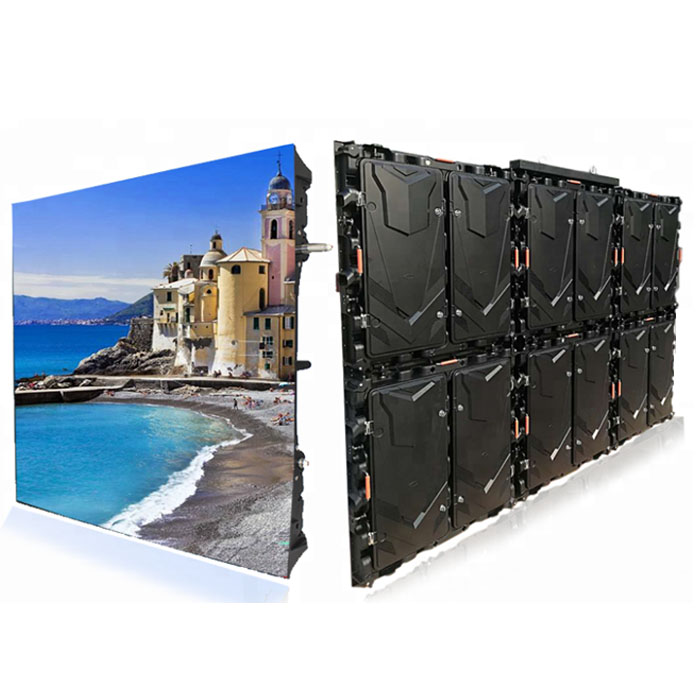LED display are used in many places in life, such as traffic displays for directing traffic, high-definition small-pitch displays in monitoring rooms, and most outdoor large-screen advertisements use LED displays.
Although LED displays have penetrated into all aspects of life, there are not many people who can tell what LED displays are, so let’s learn together.
What is LED display?
The LED display is a flat display, which is made up of LED modules spliced together. Although the “naked eye 3D LED display” has appeared on the market, it is still flat in terms of structure, and only uses visual deception, so it looks like a 3D effect. If you are interested, you can click the following:
Why is it called LED and not some other name?
This is because LED is a diode semiconductor light-emitting lamp made by controlling compounds of gallium, arsenic, phosphorus, nitrogen, and indium, so LED is actually an abbreviation for light-emitting diode.

Controlling different compounds can produce different colors of light, gallium arsenide phosphide diodes emit red light, gallium phosphide diodes emit green light, silicon carbide diodes emit yellow light, and indium gallium nitride diodes emit blue light.
When it comes to the LED display, we can easily think of the LCD which is very close to it, so what is the difference between the two?
The main working principle of the display
The LED display is usually composed of a main controller, a scanning board, a display control unit and an LED display body. The main controller obtains the brightness data of each pixel of a screen from the computer display card, and then assigns it to several scanning boards. The board is responsible for controlling several rows (columns) on the LED display screen, and the LED display signals on each row (column) are cascaded and transmitted through each display control unit in the row in a serial manner, and each display control unit directly faces the LED display body. The work of the main controller is to convert the signal of the computer display card into the data and control signal format required by the LED display screen.
The function of the display control unit is similar to that of the image display screen, which is generally composed of a shift register latch with a grayscale control function. It’s just that the scale of video LED displays tends to be larger, so an integrated circuit with a larger integration scale should be used.
The function of the scanning switch is the so-called link between the previous and the next. On the one hand, it accepts the video signal of the main controller, on the other hand, it transmits the data belonging to this level to its own display control units, and at the same time, it also sends the data that does not belong to this level downward. A cascaded scan pull transmission. The differences in space, time, sequence and other aspects of video signal and LED display data need to be coordinated by a scanning board.
The difference between LED display and LCD display

There are actually quite big differences between LED displays and LCD displays, which are mainly reflected in the following aspects:
1. The light source is different
The LCD display uses a CCFL light source, and the LED display uses an LED light source.
2. Unlimited stitching
Because the LED display screen is composed of LED modules, as long as there is enough money, LEDs can be spliced with LED modules in unlimited space, while the general LCD can only make corresponding specifications according to the corresponding size, even if It can be spliced or only a small amount of splicing is not comparable to LED.
3. Seamless stitching
The LED display can be seamlessly and infinitely spliced, and although it can be barely spliced together, there will be an irremovable border around it. Even if some LCD manufacturers use LED sewing methods, there is no way to seamlessly splicing LEDs compared.
4. Stereo effect
LED display screen can make some videos produce 3D effect through special splicing method, while LCD can only be played on a flat surface, and there is no way to perform special splicing.
5. Alien structure
The LED display screen can not only splicing a three-dimensional effect by special methods, but also can splicing various special shapes, such as spherical, heart-shaped, pentagon and other special shapes, can be spliced out, while the LCD can only be square or rectangle, There is no way to splicing it into other shapes.

What are the advantages of led display?
- The luminous brightness is strong, even if the sun shines directly on the surface of the screen, the content displayed is clearly visible.
- Super grayscale control With 1024-4096 grayscale control, the display color is above 16700000, the color is clear and vivid, and the three-dimensional sense is strong.
- Static scanning technology, using static latch scanning mode, high-power drive, fully guarantees the fineness of the picture.
- It can be matched with a light sensor to realize the function of automatic brightness adjustment. It can get the best playback effect in any environment.
- Using imported large-scale integrated circuits, the safety is greatly improved, and it is convenient for daily maintenance and debugging.
- Advanced digital video processing, distributed scanning technology, high-definition display with BSV liquid crystal splicing technology, modular design/constant current static drive, ultra-bright pure color pixels, clear image, no jitter and ghosting, and no distortion.
- Various information such as video, animation, chart, text, picture, document can be displayed.
- It can be controlled remotely, and the content can be changed at will, and it is fast.
The above is the introduction of “what is an LED display”. There are still many applications of display in our daily life. It can not only decorate the storefront, but also better promote the product. Shopping malls, hotels, high-speed railways, subways, cinemas, exhibitions, office buildings, etc., the target customers have strong spending power and huge advertising value.